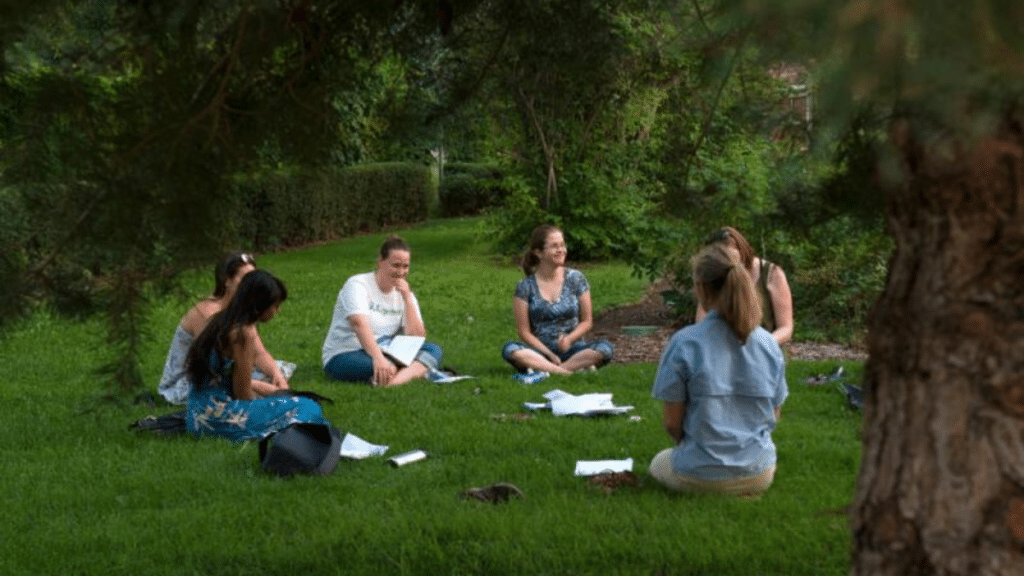We live in a time of innovation and instant access—smartphones, Wi-Fi, wearables, and 24/7 connectivity have made life more convenient than ever. But in the rush to digitize everything, we’ve become disconnected from something far more ancient and essential: the Earth itself.
While we’re constantly plugged into technology, we’re rarely connected to the Earth in a physical sense. We sleep on synthetic mattresses, walk on concrete in rubber-soled shoes, and spend our days surrounded by electromagnetic fields (EMFs). The result? A generation dealing with chronic stress, fatigue, poor sleep, and mounting anxiety.
One practice gaining quiet momentum in wellness and tech spaces alike is grounding— also known as earthing.
This simple yet powerful approach is being revisited as a tool for countering the physical and mental toll of modern life. And the best part? It’s accessible, affordable, and rooted in nature.
What Is Grounding or Earthing?
Grounding (or earthing) refers to the act of making direct physical contact with the Earth’s surface. Traditionally, this could mean walking barefoot on grass, sand, or soil. In modern contexts, it often involves earthing mats, grounding bed sheets, or underlays that connect to a grounded outlet in your home.
The Earth carries a subtle negative electric charge. When our bodies connect with it— whether through natural surfaces or conductive products—we absorb free electrons that help neutralize excess positive charges (also known as free radicals). This rebalancing effect may support everything from stress relief to inflammation reduction.
The Science: Why Grounding and Earthing Matter
Modern humans are bioelectrical systems living in a world of synthetic materials and manmade EMFs. These signals—from Wi-Fi, Bluetooth, power lines, and electronics—may contribute to internal stress, fatigue, and even oxidative damage in some individuals.
Grounding and earthing are believed to restore the body’s natural electrical state. By
directly connecting to the Earth, we may:
- Lower cortisol (stress hormone) levels
- Improve sleep and circadian rhythm
- Reduce inflammation and muscle soreness
- Enhance heart rate variability (HRV)
- Speed up physical recovery after intense activity
A 2004 study published in The Journal of Alternative and Complementary Medicine showed that subjects who slept grounded experienced improved sleep, reduced cortisol fluctuations, and reported feeling more refreshed.
While larger-scale studies are still needed, the anecdotal results have been consistent and compelling—especially for people dealing with chronic pain, high stress, or poor sleep quality.
Grounding and Earthing as Digital Detox Tools
Let’s face it: most of us spend 90% of our time indoors. Between laptops, smartphones, and constant screen exposure, our nervous systems rarely get a break. Add artificial lighting and EMFs to the mix, and it’s no wonder so many people feel burned out.
Earthing and grounding can act as natural counterbalances to our tech-heavy lifestyles. Instead of quitting technology, you use nature to offset its effects.
Grounding has been shown to increase parasympathetic (rest and digest) nervous system activity, which helps reduce anxiety and improve resilience to stress. Some people say it feels like “flipping a switch”—as if the static in their system gets neutralized.
The Easiest Way to Ground: While You Sleep
The most convenient time to practice grounding or earthing is while sleeping. After all, sleep is when the body repairs itself—and you’re in one place for 6 to 8 hours.
Using an earthing underlay sheet or grounding bed mat allows you to stay grounded overnight. These products are typically placed under your fitted sheet and connected to the Earth via a grounding cord that plugs into a wall outlet’s ground port (don’t worry— there’s no electricity involved).
By simply lying down, your body maintains a conductive path to the Earth’s surface,
allowing natural electrical exchange to happen as you rest.
For those living in cities or high-rises, or who rarely get outside barefoot, this is one of the most practical and effective ways to bring grounding into your routine.
At Urban Hippee, a wide range of grounding and earthing products are designed to make this process easy and consistent—even for busy people.
Grounding and Earthing for Mental Wellness
Chronic stress and nervous system overload are common today—even among people who eat well and exercise. That’s because mental wellness isn’t just about mindset; it’s also deeply physical.
Grounding and earthing help regulate the body’s natural rhythms. When you’re grounded, you’re more likely to feel calm, focused, and emotionally balanced. Many users report deeper meditations, reduced reactivity, and less mental fog after just a few days of consistent use.
This is particularly helpful for people with anxiety, ADHD, or trouble “switching off” at the end of the day. Even 20–30 minutes of grounding during the afternoon or evening can promote a noticeable shift in mood and mental clarity.
Practical Tips to Start Grounding Today
- Go barefoot on natural ground – grass, soil, or sand are ideal. Even 10–15 minutes can help.
- Use grounding mats at your desk – perfect for office workers or people on screens all day.
- Sleep grounded – install a grounding underlay or sheet and reap the benefits while you rest.
- Stay hydrated – a well-hydrated body conducts the Earth’s energy more effectively.
- Avoid thick synthetic barriers – heavy mattress protectors or polyester layers can block conductivity.
The Case for Grounding and Earthing
In the pursuit of better health, we often reach for the latest supplement, gadget, or wearable. But grounding and earthing invite us to look backward—to something primal, natural, and free.
This isn’t about rejecting technology. It’s about recalibrating. It’s about giving your body the opportunity to recharge, not just metaphorically—but literally—through connection with the Earth.
If you’re feeling fatigued, stressed, or disconnected, grounding might be the missing piece
in your wellness puzzle. And the beauty is, you don’t have to go off-grid to experience it. Whether you’re walking barefoot on the grass or sleeping on a grounded sheet, you’re giving your body something it’s always needed.
Nature’s power has always been beneath our feet—we’ve just forgotten to plug back in.
